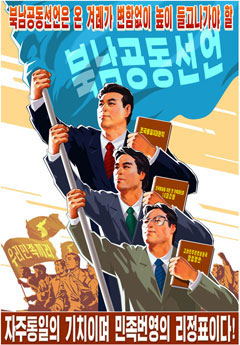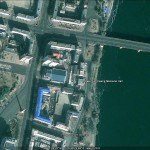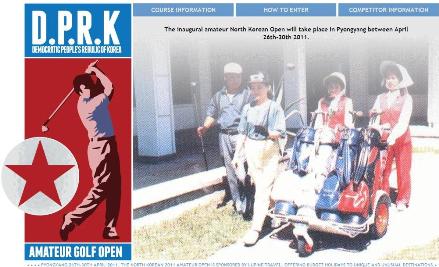Only a handful of outside economists spend the enormous time required to delve into the mysteries of North Korea.
Marcus Noland is one of them. With his research and writing partner Stephen Haggard, Mr. Noland has written several books about the North, including a definitive study on the famine that gripped the country from the mid- to late-1990s and resulted in the death of at least 1 million people and perhaps upwards of 2 million.
In a new book published this week, called Witness to Transformation: Refugee Insights into North Korea, Messrs. Noland and Haggard produce the results of interviews they and their researchers conducted with more than 1,600 North Koreans who fled the country. The interviews took place from 2004 to 2008 and involved people who left North Korea as early as 1991.
The book documents the remarkable changes inside the North through the eyes of people who lived through them. Of course, it’s a group that holds negative views of North Korea. But the economists do their best to take that into account.
Mr. Noland, who is based at the Peterson Institute for International Economics in Washington, discussed the book with us. Here’s an excerpt of the interview:
WSJ: Most books and studies on North Korea by people outside the country are focused on the nuclear weapons issue and the geopolitics around that. Why have you focused on refugees and the economy?
Mr. Noland: An understudied aspect of the North Korea story, we believe, is the really quite dramatic internal changes that have been going on in North Korea over the last 10 to 20 years. North Korea poses an analytical challenge in that access is limited and the conventional ways that one could go studying a country aren’t available. In this context, the diaspora of refugees leaving the country is an important source of information.
The refugees themselves constitute a first-order crisis. Most of these people, in a clinical setting, would probably be diagnosed with post-traumatic stress disorder. Their mental health issues appear to be related not only to the difficult circumstances they faced in China but their experiences in North Korea.
WSJ: What is the cause of those stresses?
Mr. Noland: Specifically the loss of family members and family separations associated with the famine. The sense among many of them that they were abandoned in their moment of greatest need. The feeling that they were not given access to international humanitarian aid, which many of them believe was diverted to the military. And the experience of many of them of having been arrested and incarcerated in North Korea’s vast and sprawling penal system.
So the refugees themselves are an issue. They also provide us a window into North Korea.
WSJ: What did you learn from them?
Mr. Noland: Our book addresses three broad issues, which they illuminate.
The first is the underlying economic changes in the country. What we find is the economy has essentially marketized over the last 15 years or so, not as any kind of planned reform but rather as a function of state failure. What is extraordinary is the degree of marketization that the refugees portray when describing their daily lives. They describe a situation in which doing business or engaging in corrupt or illegal activities is increasingly seen as the way to get ahead in North Korea. And positions in the state or the party are still highly desired and seen as a way to get ahead, but not out of patriotism because these positions increasingly provide a platform for extortion of the general population.
Which brings us to the second big theme of the book and that is the criminalization of economic activity and the use of this vast penal system not only for its traditional use as a tool of political intimidation but for economic extortion. What we find is that changes in the North Korean legal code have criminalized vast areas of economic life, the sort of economic life that real people actually lead. In their daily lives, most if not all of North Korea’s non-elites run afoul of some of these statutes, which in effects makes everyone a criminal.
The fact that everyone is running afoul of some statute is combined with the fact that the police are given extraordinary discretion in who they arrest and who they incarcerate and for what period of time. We find that the North Korean penal system has four components. The worst and best known are the long-term political prisons, the North Korean gulag that was set up by Soviet advisors. There’s also a set of institutions that are effectively felony prisons, where you put the murderers and the rapists. Then there are a set of institutions that correspond to misdemeanor jails in other societies. What has developed since the famine period of the 1990s is a fourth set of institutions that have been codified. Those primarily house people who have made economic crimes, such as hiring labor for money or selling things in the market that you’re not supposed to be selling. We go through the enormous expansion of articles in the North Korean legal code to cover these crimes, such as illegally operating a restaurant.
This is a fantastic instrument for extortion. It means if you were engaging in entrepreneurial behavior, the police can come to you and say ‘You’re engaged in illegal activity. We can take you, take your spouse, take your kid and put them in this institution where you know horrible things happen.’ So the penal system not only serves its traditional function as a platform for political corruption but we find it is now a platform for economic predation as well.
We discovered something that we call the ‘market syndrome.’ It is a series of characteristics that seem to be linked with engaging in market activities. People who engage in market activities are 50% more likely to be arrested than their counterparts. They are more likely to harbor more negative appraisals of the regime than their counterparts. And in a society where people are afraid to express their opinions, these guys who are engaged in the market, who have been to jail and been released, are more likely to express their views to others. That is to say that the market is emerging as a kind of semi-autonomous zone of social communication and potentially political organizing. And in that sense, the regime is right to fear the market.
And that brings us to the final theme, and that is the political attitudes of these people and nascent dissent. What we find is people have very negative appraisals of the regime. That’s not surprising. We’re sampling from a group of people that have voted with their feet and one would expect them to have negative views, though we go through fairly elaborate statistical exercises to try to control as best we can for the demographic characteristics of the people we’ve interviewed.
People have very negative views of the regime. They are increasingly disinclined to believe the regime’s meta-narrative, which rationalizes their misery as a function of being held captive by hostile foreign forces. Most of these people hold the government itself as responsible for their plight.
WSJ: You two previously wrote one of the seminal studies on the North Korean famine (Famine in North Korea: Markets, Aid and Reform), what did the refugees tell you about living through that?
Mr. Noland: Both Steph and I were really struck by was just how the famine experience reverberates. The famine was more than 10 years ago. It ended in 1998. A significant share of the people, I think about a third, reported separation from, or death of, family members during that process. You had people out scavenging to find food. People going to China. Family separation and death of family members just continued to reverberate.
We asked them: ‘Were you aware of the international food aid program?’ The numbers differ in our surveys, but significant numbers of people were unaware of the food aid program. It was astonishing to us.
Then, among the ones who were aware, we asked `Do you believe you were a beneficiary?’ Only a small minority responded yes. And when we run all the regressions, this status of knowing of the existence of the program but believing you were not a beneficiary, this is a profoundly demoralizing experience. These people feel they were abandoned at this time of need, when they were seeing their families and neighbors dying. They believe it’s going to the army and the elites. That group of people, when we run the psychological tests and ask them their views of the regime, this is an embittered group. The effect of that experience is bigger than being in the prisons.
We wrote a book on the famine, so obviously we’re interested in it. But we were surprised and we wouldn’t have guessed that this experience continues to reverberate among the people who lived through it.



